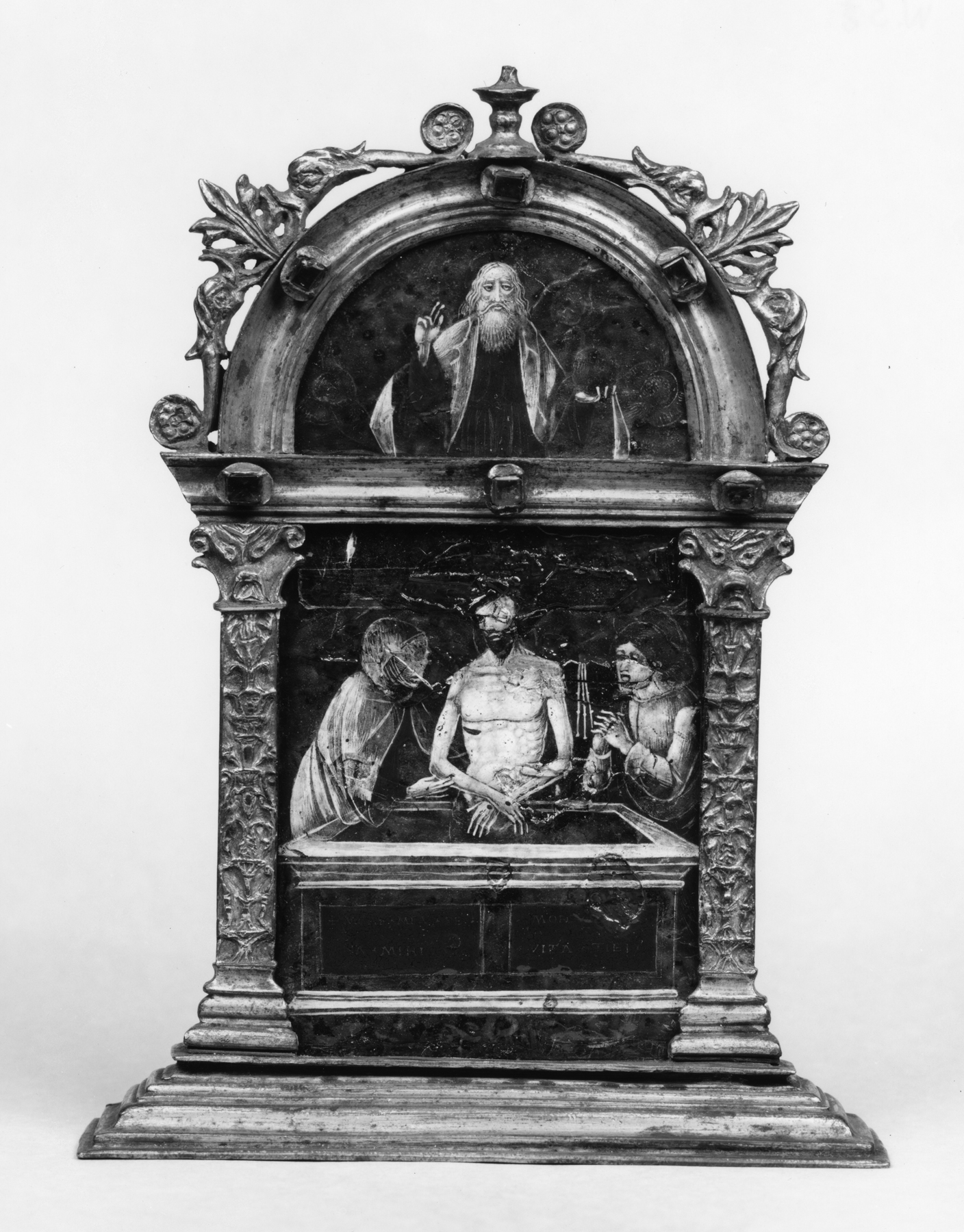Pax with Christ as the Man of Sorrows
(Renaissance Europe )
This pax - an object held up to the congregation during the Catholic Mass for the "kiss of peace" pax is the Latin word for peace - is set with an enameled plaque divided into two subjects: below, Christ, as the Man of Sorrows, standing resurrected in the tomb between the Virgin and St. John, and in front of the instruments of the Passion: the cross, the lance and the whip. In the lunette above appears God the Father, wearing the cross-nimbus, holding the globe, blessing and surrounded by cherubs, a composition typical of the paxes of Venice and Padua.
The frame is designed to suggest an altarpiece and is original. It consists of pilasters decorated with vases of flowers, crowned by capitals. The lunette, framed in a deep molding, is set, as is the lintel below, with cabochons of glass-paste, and decorated on its outer edge with a candelabrum at the summit and dolphins flanking acanthus leaves on the sides.
Provenance
Provenance (from the French provenir, 'to come from/forth') is the chronology of the ownership, custody, or location of a historical object. Learn more about provenance at the Walters.
Seligmann, Paris [date and mode of acquisition unknown]; Henry Walters, Baltimore, 1906, by purchase; Walters Art Museum, 1931, by bequest.
Conservation
| Date | Description | Narrative |
|---|---|---|
| 12/8/1955 | Treatment | repaired |
| 8/24/1964 | Treatment | cleaned; loss compensation; coated |
Geographies
Italy, Venice
(Place of Origin)
Italy, Lombardy (Place of Origin)
Measurements
H: 7 x W: 5 1/8 in. (17.8 x 13 cm)
Credit Line
Acquired by Henry Walters, 1906
Location in Museum
Not on view
Accession Number
In libraries, galleries, museums, and archives, an accession number is a unique identifier assigned to each object in the collection.
In libraries, galleries, museums, and archives, an accession number is a unique identifier assigned to each object in the collection.
44.129


